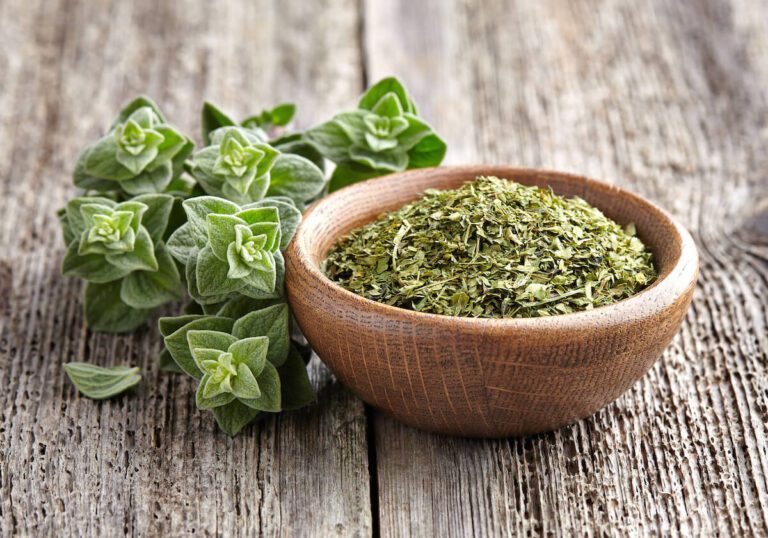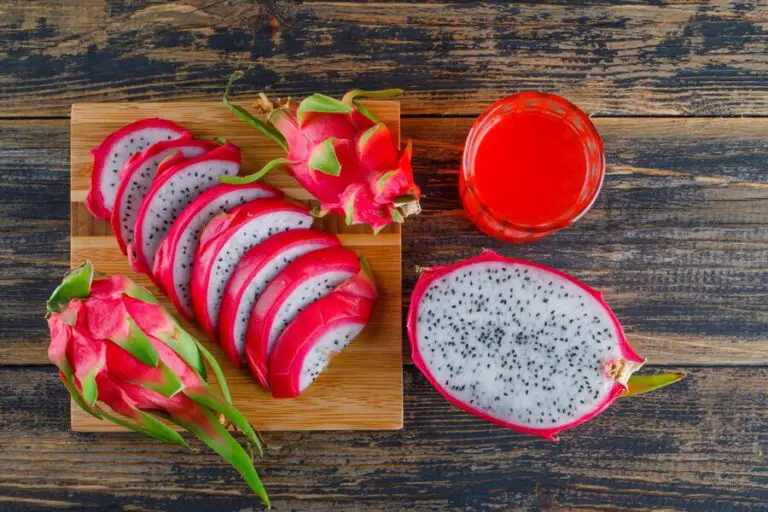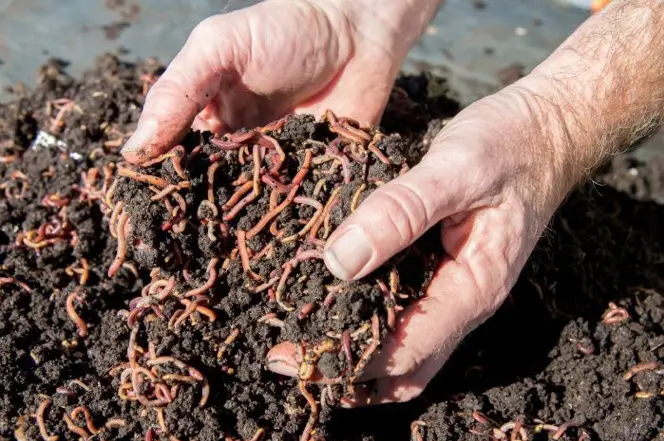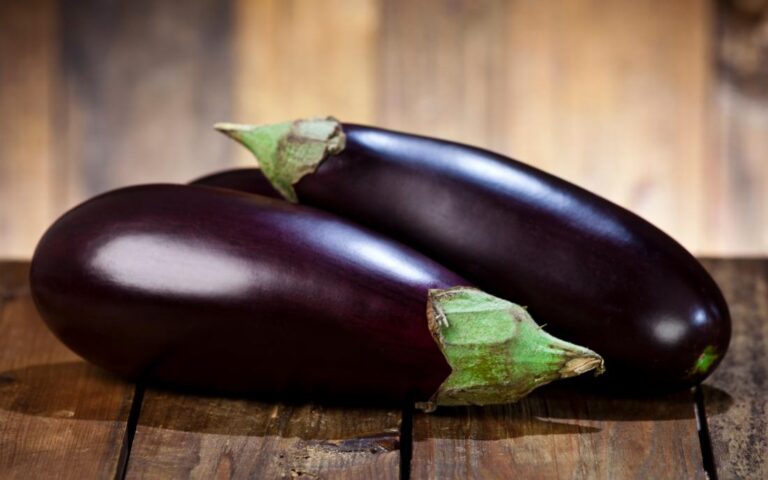Chinese Money Plant: The Ultimate Care Guide: A Guide to Growing and Caring for This Unique and Attractive Houseplant
Table of Contents
Understanding the Chinese Money Plant: Exploring the Origins and Characteristics of This Unique Houseplant
The Chinese Money Plant, also known as Pilea peperomioides, is a unique houseplant that has been capturing the attention of gardening enthusiasts around the world. This plant is native to southeastern China and was brought to the Western world by a Norwegian missionary in the 1940s. Its distinct coin-shaped leaves and upright growth habit make it a popular choice for indoor gardens.
One of the most fascinating characteristics of the Chinese Money Plant is its ability to propagate easily. Each mature plant produces tiny pups or offshoots that can be separated and transplanted to create new plants. This natural ability for propagation has made the Chinese Money Plant a favorite among plant enthusiasts who enjoy multiplying their collection. Additionally, this plant has gained popularity due to its air-purifying qualities, as it has been shown to filter toxins from the surrounding environment.

Stay tuned as we delve deeper into the origins, care, and cultivation of the Chinese Money Plant. In the following sections, we will explore the ideal growing conditions, soil requirements, watering techniques, and other aspects crucial to ensuring the health and well-being of this extraordinary houseplant. Whether you are a seasoned gardener or a beginner, our comprehensive guide will equip you with all the knowledge you need to successfully care for the Chinese Money Plant and enjoy its lush foliage in your home.
Selecting the Perfect Spot: Finding the Ideal Environment for Your Chinese Money Plant to Thrive
Selecting the perfect spot for your Chinese Money Plant is crucial in ensuring its optimal growth and overall health. This unique houseplant thrives in bright, indirect light, making it an ideal addition to your home or office space. Though it can tolerate lower light conditions, placing it in an area with indirect sunlight will encourage its lush foliage to flourish.
It is important to avoid exposing your Chinese Money Plant to direct sunlight, as this can lead to burned leaves and hinder its growth. Consider placing it near a window with sheer curtains or in a spot where it can receive filtered light throughout the day. Additionally, ensure that the temperature in the chosen location remains between 65°F and 75°F (18°C – 24°C) for optimal growth. Maintaining a comfortable and stable environment will create the ideal conditions for your Chinese Money Plant to thrive.
Choosing the Right Soil: A Guide to Optimal Potting Mix for Your Chinese Money Plant
When it comes to growing a healthy Chinese Money Plant, choosing the right soil is crucial. The optimal potting mix will provide the perfect balance of nutrition, water retention, and drainage for your plant to thrive.
One key factor to consider is the soil’s ability to retain moisture. Chinese Money Plants prefer slightly moist soil, but overwatering can lead to root rot. Look for a potting mix that has excellent drainage properties, allowing excess water to escape easily. This will prevent waterlogged soil and ensure that your plant’s roots have access to the oxygen they need for healthy growth. Additionally, a good potting mix will also retain enough moisture to keep the roots hydrated between waterings.
Another important factor is the soil’s nutrient content. Chinese Money Plants require a well-balanced mix that is rich in organic matter. Organic materials, such as compost or well-rotted manure, add essential nutrients to the soil and improve its structure. Furthermore, a mix that includes perlite or vermiculite can help improve drainage while retaining moisture, promoting healthy root development. The addition of nutrients can also be supplemented with organic fertilizers to ensure your Chinese Money Plant receives the necessary nutrients for lush foliage.
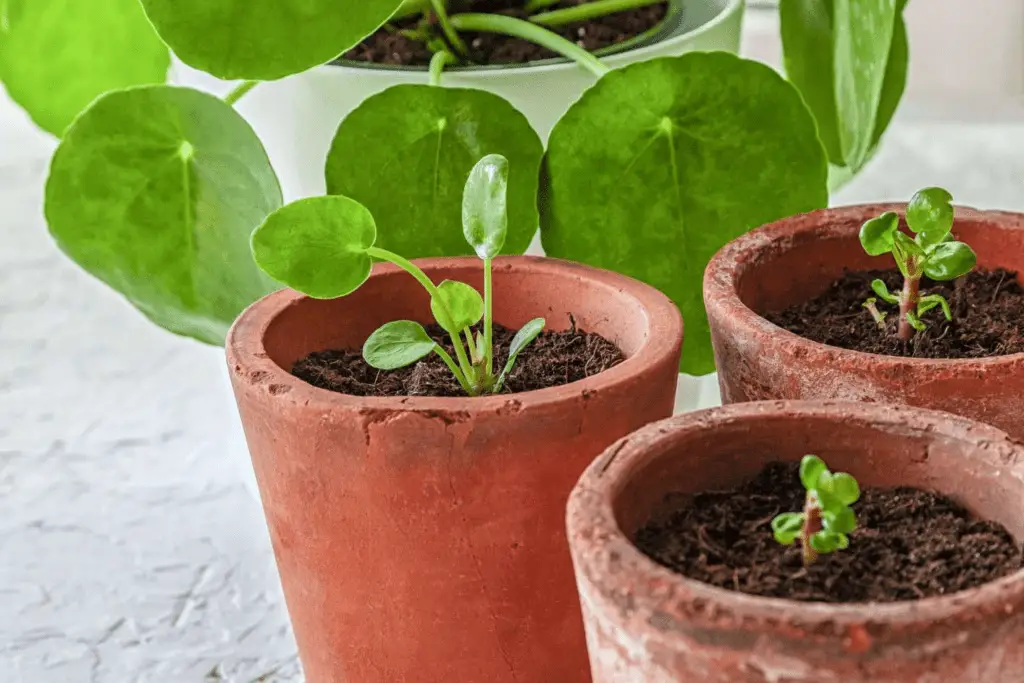
Watering Wisely: How to Properly Hydrate Your Chinese Money Plant
Proper hydration is essential for the healthy growth and development of the Chinese Money Plant (Pilea peperomioides). While it may seem like a simple task, watering your plant wisely requires attention to detail and understanding its specific needs.
The Chinese Money Plant thrives in well-drained soil, so it’s important to avoid overwatering. Before watering, check the moisture level of the soil by inserting your finger about an inch deep. If it feels dry, it’s time to water. However, if it still feels slightly moist, hold off on watering for a day or two.
When watering your Chinese Money Plant, aim for a thorough drenching rather than a light sprinkle. This allows the water to reach the roots and promotes deep watering, encouraging stronger root growth. It’s advisable to use room temperature water, as cold or hot water can shock the plant. Pour the water slowly and evenly onto the soil, allowing it to flow through the drainage holes and ensuring no stagnant water remains in the pot.

To prevent water-logging and root rot, it’s crucial to provide adequate drainage. If your pot lacks drainage holes, consider transferring the plant to a pot with proper drainage or using an alternative method, such as a self-watering system. Remember, the Chinese Money Plant prefers slightly moist soil, not soggy conditions. Regularly monitor the moisture level to ensure you’re neither underwatering nor overwatering your plant.
Stay tuned for the upcoming section on Shedding Light on Light Requirements: Providing Adequate Sunlight for Healthy Growth as we continue exploring the best practices for cultivating a thriving Chinese Money Plant.
Shedding Light on Light Requirements: Providing Adequate Sunlight for Healthy Growth
When it comes to keeping your Chinese Money Plant healthy and thriving, providing adequate sunlight is crucial. This unique houseplant, also known as Pilea peperomioides, originates from the Yunnan Province in China, where it grows naturally in shaded areas with indirect sunlight. However, indoors, it still requires a good amount of light to support healthy growth.
Ideally, your Chinese Money Plant should be placed near a bright, indirect light source. A west or east-facing window is often the best choice to provide the right balance of brightness without subjecting the plant to direct, intense sunlight. If these options are not available, you can also consider using artificial grow lights, specifically designed for houseplants, to ensure your Chinese Money Plant receives the necessary light for optimal growth. Remember, consistency is key, so try to place your plant in the same location every day to avoid confusion and stress for the plant.
Temperature and Humidity: Creating the Perfect Climate for Your Chinese Money Plant
Temperature and humidity play a crucial role in creating the perfect climate for your Chinese Money Plant. These factors affect the plant’s growth, development, and overall health. The ideal temperature range for your Chinese Money Plant is between 65°F and 75°F (18°C to 24°C). This temperature range mimics its native habitat, providing a comfortable environment for the plant to thrive.
To maintain the optimal temperature, avoid placing your Chinese Money Plant in areas with extreme fluctuations or exposure to cold drafts. Keep it away from heating or cooling vents that may create drastic temperature changes. Additionally, avoid placing the plant near windows during colder months, as temperatures near windows can drop significantly.
| Aspect | Ideal Conditions |
|---|---|
| Light | Indirect, bright light; avoid direct sun |
| Temperature | 65-75°F (18-24°C) |
| Humidity | Moderate; 50-60% humidity is optimal |
| Watering | Allow soil to dry between watering; water sparingly |
| Soil | Well-draining mix, such as peat-based with perlite |
| Potting | Choose a pot with drainage holes |
| Fertilization | Monthly during growing season with balanced liquid fertilizer |
| Pruning | Trim leggy or discolored leaves |
| Rotation | Rotate the plant regularly for even growth |
| Pests | Check regularly for pests; treat promptly if found |
Humidity is another important consideration for your Chinese Money Plant. This plant originates from the rainforests of China, where humidity levels tend to be higher. To recreate this environment, aim for a humidity level of around 50% to 60%. Regular misting of the plant’s leaves with room-temperature water can help increase humidity levels. Alternatively, you can place a tray with water near the plant or use a humidifier to maintain adequate humidity. By providing the right temperature and humidity conditions, you can ensure that your Chinese Money Plant thrives and flourishes in its new home.
Fertilizing Tips: Nourishing Your Chinese Money Plant for Lush Foliage
To ensure lush foliage and healthy growth of your Chinese Money Plant, proper fertilization is essential. This process involves providing your plant with the necessary nutrients it needs to thrive. While the Chinese Money Plant is relatively low-maintenance, a well-balanced fertilization regimen can significantly enhance its overall appearance and vitality.
When it comes to fertilizing your Chinese Money Plant, it is important to choose a high-quality, balanced fertilizer specifically designed for indoor plants. Look for a formula that contains nitrogen, phosphorus, and potassium, as these are the essential nutrients that promote robust foliage growth. Opt for a slow-release fertilizer to provide a consistent and gradual nutrient supply over time.
It is recommended to fertilize your Chinese Money Plant during the active growing season, which typically spans from spring to early fall. However, it’s crucial to follow the instructions on the fertilizer packaging regarding the frequency and amount of application. Over-fertilization can lead to nutrient toxicity and can be detrimental to the plant’s health. To determine the appropriate dosage, consider factors such as the plant’s age, size, and overall health. Additionally, be sure to thoroughly water your plant before applying the fertilizer, as this helps prevent the roots from burning.
Repotting and Propagation: Steps to Successfully Transplant and Multiply Your Chinese Money Plant
Repotting and propagation are essential steps for successfully caring for Chinese Money Plants and promoting their growth and multiplication. Repotting, also known as transplanting, should be done every one to two years or whenever the plant’s roots outgrow the current pot. This process allows the plant to gain access to fresh nutrients and encourages healthy root development.
To repot your Chinese Money Plant, start by selecting a pot that is one size larger than the current one. Make sure the new pot has drainage holes to prevent waterlogging. Prepare a well-draining potting mix by combining equal parts of peat moss, perlite, and a quality organic potting soil. Gently remove the plant from its current pot, taking care not to damage the roots. Place the plant in the new pot, ensuring that the root ball sits at the same level as before. Fill in the gaps with the prepared potting mix and lightly tamp it down. Finally, water the plant thoroughly and place it in a spot with bright, indirect light. It’s best to repot Chinese Money Plants in spring or early summer when they enter their active growing phase.
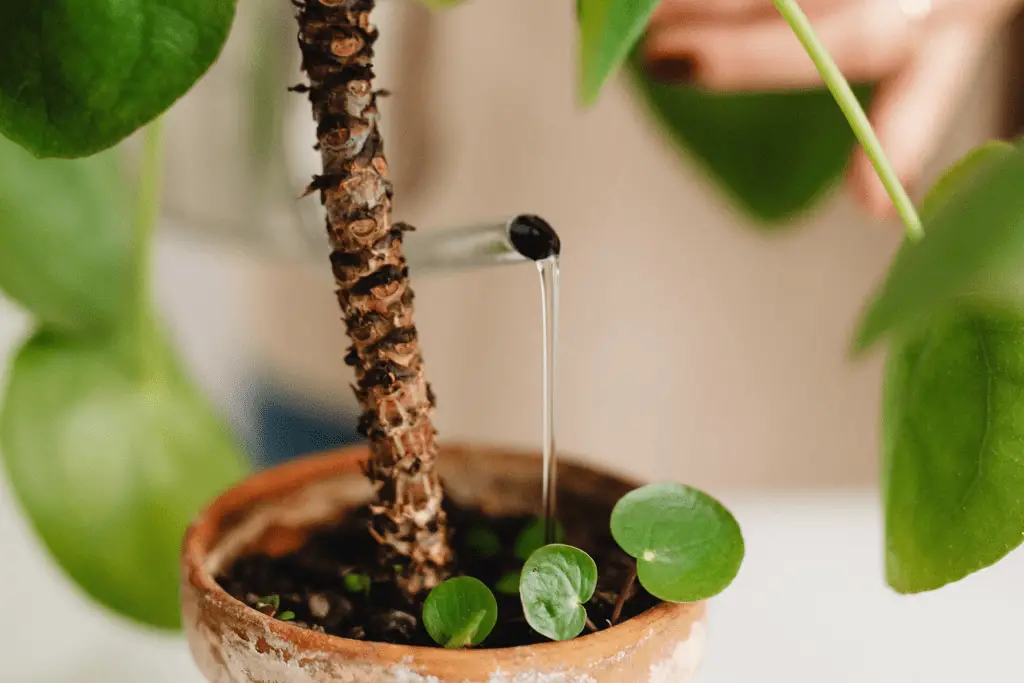
Propagation is another exciting way to expand your collection of Chinese Money Plants. This method involves taking cuttings from the mother plant and encouraging them to develop roots of their own. First, select a healthy stem with several leaves from the mother plant. Using sterilized pruning shears, cut the stem just below a node, which is a swollen area where the leaves emerge. Remove the bottom leaves, leaving only a few at the top. Dip the cut end in a rooting hormone powder to encourage root growth, although this step is optional. Place the cutting in a small container filled with a well-draining potting mix and lightly water it. Cover the container with a plastic bag or a humidity dome to create a moist and warm environment. After a few weeks, roots should start to form, and you can then transfer the new plant to its individual pot.
By following these simple steps for repotting and propagation, you can ensure the health and continued growth of your Chinese Money Plants. These processes allow for fresh nutrients, improved root development, and the opportunity to expand and multiply your plant collection. With proper care, your Chinese Money Plants will reward you with their striking foliage and bring a touch of nature’s beauty into your living space.
Pruning and Trimming Techniques: Maintaining the Shape and Health of Your Chinese Money Plant
Proper pruning and trimming techniques are essential for maintaining the shape and health of your Chinese Money Plant. Regular pruning not only promotes a compact and bushy growth habit but also helps prevent overcrowding and encourages new leaf growth. To achieve optimal results, it is important to follow a few key guidelines.
Firstly, always use clean and sharp pruning shears or scissors to make clean cuts. This reduces the risk of damage or infection to the plant. When pruning, aim to remove any dead or yellowing leaves, as these can be signs of nutrient deficiencies or pests. Additionally, if you notice any stems or branches that are crossing or rubbing against each other, it is best to remove them to prevent further damage.
Secondly, consider the overall shape you want your Chinese Money Plant to maintain. Pruning can be used to shape your plant into a specific form or encourage fuller growth. For example, if you prefer a more compact appearance, you can trim back any long or leggy stems. On the other hand, if you desire a bushier plant, you can encourage branching by cutting just above a node or set of leaves. This stimulates new growth and results in a fuller and more vibrant plant.
Remember, when pruning your Chinese Money Plant, always consider the specific needs and growth patterns of this unique houseplant. By maintaining a regular pruning routine and following proper techniques, you can enjoy a well-shaped and thriving Chinese Money Plant that adds a touch of natural beauty to your home. So, let’s dive into the next section and explore common pests and diseases that you may encounter while caring for your Chinese Money Plant.
• Always use clean and sharp pruning shears or scissors to make clean cuts.
• Remove any dead or yellowing leaves as they can be signs of nutrient deficiencies or pests.
• Trim stems or branches that are crossing or rubbing against each other to prevent further damage.
• Consider the overall shape you want your Chinese Money Plant to maintain.
• Trim back long or leggy stems for a more compact appearance.
• Encourage branching by cutting just above a node or set of leaves for a bushier plant.
• Maintain a regular pruning routine and follow proper techniques for optimal results.
Common Pests and Diseases: Identifying and Treating Potential Issues with Your Chinese Money Plant
Pests and diseases can pose significant challenges to the health and vitality of your Chinese Money Plant. It is crucial to identify and treat these potential issues promptly in order to safeguard the well-being of your beloved plant. While the Chinese Money Plant is generally robust and resistant to many pests, there are a few common offenders that may appear from time to time.
One such pest is the spider mite (Tetranychidae), a tiny creature that thrives in dry conditions and can rapidly infest your plant. Look out for the telltale signs of spider mite infestation, such as stippled leaves, webbing in the leaf axils, and a decline in overall plant vigor. To combat spider mites, consider introducing natural predators like predatory mites or ladybugs. Alternatively, you can use a gentle insecticidal soap to control the population. Remember to follow the instructions provided on the product carefully to ensure the health and safety of your plant.
A disease that occasionally affects Chinese Money Plants is root rot, caused by excessive moisture and poorly drained soil. Root rot typically manifests as wilting, yellowing leaves, and a foul odor emanating from the soil. To address root rot, it is crucial to improve drainage by using a well-draining potting mix and ensuring the plant receives the appropriate amount of water. If the root rot has progressed significantly, pruning away the affected roots and repotting the plant in fresh soil may be necessary. Additionally, adjusting the watering frequency and avoiding overwatering in the future will help prevent the recurrence of this disease.
Troubleshooting Common Problems: Solutions for Yellowing Leaves, Wilting, and Other Concerns
Yellowing leaves and wilting are common problems that can occur in Chinese Money Plants. These issues are often indicative of underlying issues that need to be addressed to ensure the plant’s health and vitality. One of the main causes of yellowing leaves is overwatering. Chinese Money Plants prefer slightly moist soil, but excessive water can lead to root rot and nutrient deficiencies. To remedy this issue, allow the soil to dry out between waterings and adjust your watering schedule accordingly. Additionally, ensure that the plant is not sitting in standing water, as this can exacerbate the problem.
Another possible reason for yellowing leaves and wilting is insufficient light. Chinese Money Plants thrive in bright but indirect light. If your plant is not receiving enough light, it may not be able to photosynthesize properly, leading to weakened growth and yellowing leaves. Consider relocating your plant to a brighter spot or supplementing natural light with artificial grow lights. It’s essential to strike a balance, as too much direct sunlight can scorch the plant’s delicate leaves. By providing adequate light, you can help your Chinese Money Plant regain its vibrancy and prevent further leaf discoloration. As with any plant issue, it’s crucial to assess all potential factors and address each accordingly to restore your Chinese Money Plant’s health and ensure its continued growth and beauty.
Enhancing Aesthetics: Creative Ideas for Decorating with the Chinese Money Plant in Your Home
Enhancing the aesthetics of your home with the Chinese Money Plant is a fun and creative way to bring a touch of nature indoors. The unique round leaves and slender stems of this plant make it a perfect choice for adding a modern and minimalist vibe to your living space. Here are a few creative ideas to help you decorate with the Chinese Money Plant:
1. Create a plant corner: Set up a dedicated space in your home where your Chinese Money Plant can take center stage. Place it on a stylish plant stand or a decorative shelf to showcase its beauty. Surround it with other indoor plants of varying heights and textures to add visual interest and create a lush, green oasis.
2. Use unconventional containers: Instead of traditional plant pots, consider using unique and eye-catching containers to hold your Chinese Money Plant. Repurpose vintage teacups, glass jars, or even decorative mason jars to bring a touch of quirkiness to your plant display. Just make sure the container has proper drainage to prevent overwatering.
Remember, when arranging the Chinese Money Plant in your home, keep in mind its light and temperature requirements. Place it in a spot that receives bright, indirect sunlight and maintains a temperature range of 65-75°F (18-24°C). With a little creativity and attention to detail, your Chinese Money Plant will become a stunning decorative element that adds life and vibrancy to your living spaces.
Understanding the Chinese Money Plant: Exploring the Origins and Characteristics of This Unique Houseplant
The Chinese Money Plant, also known as Pilea peperomioides, is a fascinating addition to any indoor green space. Native to the Yunnan province of China, this plant has gained popularity worldwide due to its distinctive appearance and ease of care. Its unique round foliage, resembling small coins, has earned it the nickname “Money Plant.”
One striking characteristic of the Chinese Money Plant is its ability to propagate rapidly, producing numerous offshoots called “pups.” With proper care and maintenance, these pups can be separated from the main plant and transplanted to create new individual plants. This plant’s versatility combined with its attractive foliage makes it a favorite among both experienced and novice gardeners. So, let’s delve into the key aspects that will help you cultivate and maintain a healthy Chinese Money Plant in your home.
How often should I water my Chinese Money Plant?
It is recommended to water your Chinese Money Plant once the top inch of soil feels dry to the touch. However, it’s important not to overwater as this can lead to root rot.
Can I propagate my Chinese Money Plant in water?
Yes, Chinese Money Plants can be easily propagated in water. Simply take a cutting from a healthy stem, place it in a glass of water, and wait for roots to develop before transferring it to soil.
How often should I fertilize my Chinese Money Plant?
Chinese Money Plants benefit from monthly fertilization during the spring and summer months. Use a balanced houseplant fertilizer and follow the instructions on the packaging for proper dilution.
What should I do if my Chinese Money Plant’s leaves start turning yellow?
Yellowing leaves on a Chinese Money Plant can be a sign of overwatering, underwatering, or nutrient deficiency. Check the soil moisture levels, adjust your watering routine, and consider fertilizing if necessary.
Can I place my Chinese Money Plant in direct sunlight?
While Chinese Money Plants enjoy bright, indirect sunlight, direct sunlight can scorch their leaves. It is best to place them in a spot with filtered or indirect light.
How often should I repot my Chinese Money Plant?
Chinese Money Plants prefer slightly crowded roots, so they only need to be repotted every 2-3 years. If you notice roots coming out of the drainage holes or the plant becoming top-heavy, it may be time to repot.
What are some common pests that can affect my Chinese Money Plant?
Chinese Money Plants are generally resistant to pests, but they can occasionally be affected by mealybugs or spider mites. Regularly inspect your plant for signs of infestation and take appropriate measures if necessary.
How can I enhance the aesthetics of my Chinese Money Plant?
Consider placing your Chinese Money Plant in a decorative pot or displaying it in a hanging planter to add visual interest. You can also create a mini garden by pairing it with other complementary houseplants.
Can I use tap water to hydrate my Chinese Money Plant?
Tap water can contain chlorine and other chemicals that may be harmful to your Chinese Money Plant. It is recommended to use filtered or distilled water, or simply let tap water sit overnight to allow the chlorine to dissipate before watering.
Is the Chinese Money Plant toxic to pets?
No, the Chinese Money Plant is considered non-toxic to cats and dogs. However, it’s always a good idea to monitor your pets around any houseplant to prevent accidental ingestion.

Pallavi Gupta is a burgeoning writer at SouthElMonteHydroponics, blending her passion for data analysis with a keen interest in biotechnology. Currently pursuing a Bachelor’s in Biotechnology at Amity University, Pallavi delves into the intricacies of life sciences while gaining hands-on experience in the exciting world of data analysis. Her unique background provides a fresh perspective on hydroponic farming, as she explores the intersection of biotechnology and sustainable agriculture. Through her writing, Pallavi aims to bridge the gap between data-driven insights and innovative farming practices, inspiring others to harness technology for a greener future.

